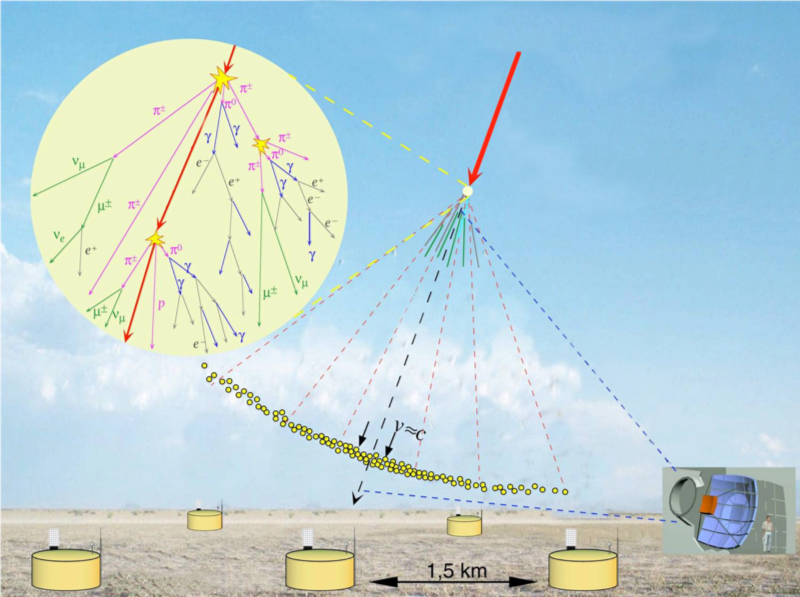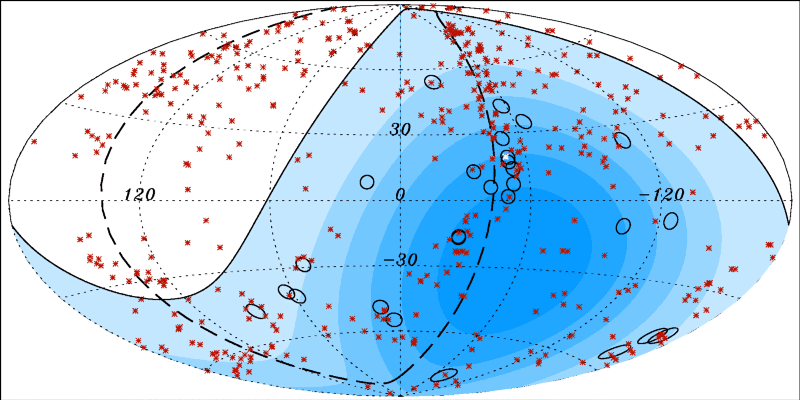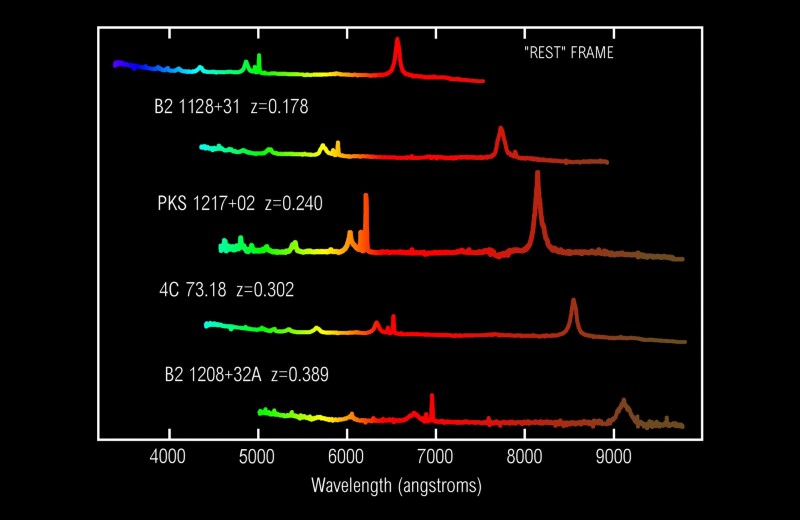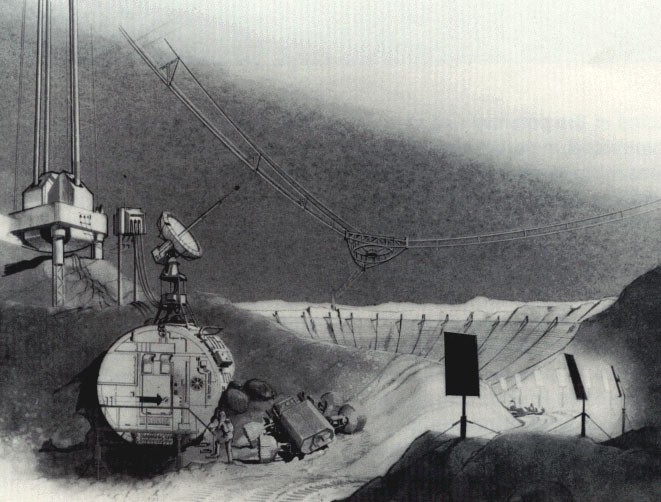Physics at the limit of the universe

In the field of cosmology, interesting questions are usually well covered in scientific papers. Uncovering the secrets of dark energy, the source of the accelerating expansion of the Universe, is one of the greatest mysteries of modern science. Dark matter, particles that can explain a large number of observable oddities of the Universe, are not yet given to scientists seeking direct evidence of its existence. The physics of black holes, with its paradoxes of the curvature of space and time and the recent attention, thanks to the blockbuster Interstellar, is always ready to cause admiring exclamations.
All these areas of research are actively developed by the cosmological community, and not only are concepts that attract the attention of people who are not scientists. But if you visit a university where cosmologists work, or a cosmology conference, you will hear reports on other interesting areas of our science, expanding scientific knowledge, from inflation theories to the detection of gravitational waves and others. In the popular science literature, they are given relatively little attention when compared to the “big three”: dark matter, dark energy, and black hole physics. I would like to describe two areas that are part of cosmology and deserve the same attention: an understanding of the nature of ultrahigh-energy cosmic rays and the marking of the Universe of dark ages.

')
Ultrahigh-energy cosmic rays
The atmosphere of the earth is constantly bombarded by particles from all directions in space. These particles are not like meteorites or cosmic fragments, but they are separate particles or atomic nuclei. But apart from this, nothing is known about them, since we do not measure cosmic rays directly. When a beam enters the atmosphere, it collides with its particles. This causes a chain reaction of secondary particles, which falls on a fairly large surface area - the so-called. wide air shower [air shower]. We built a detector of such a shower in an area of 2590 km. Sq. - this is an observatory to them. Pierre Auger in the Argentinean city of Mendoza. Capacities of the detector are able to determine the particles that fall into them, and recreate the incoming direction and energy of the cosmic ray, which gave rise to a specific event.

The energy of cosmic rays observed by the Auger Observatory may differ by ten orders of magnitude. The rays with the highest energy, which are called ultra high energy cosmic rays (UHECR), carry 1 joule of energy per particle. About as much energy you spend to pick up a cup of coffee from the table and take a sip, while all this energy is contained in one particle.
Another example: at the Large Hadron Collider, the largest and most powerful of the constructed ones, they operate with energies of the order of 10 -6 J. In the UHECRs observed, there is a million times more energy.

Observed sources of cosmic rays (black circles). Red dots - the location of active galactic nuclei, considered sources of UHECR.
Low-energy rays are observed many times more than high ones — about 10 6 rays with average energy and about 1 UHECR appear per square kilometer per year. This is one of the reasons why it is difficult to determine the exact direction from which UHECRs come from - they are too rare. It is also difficult to say what accelerates these rays to such energies. So far we are thinking about supernova explosions, neutron star associations, black hole acceleration of matter, gamma-ray flashes, and other, more exotic explanations. None of the explanations have been confirmed.

Radiation with a length of 21 cm
After the appearance of the cosmic microwave background radiation, dark ages came to the universe. During this period there was no bright luminous matter in it. No stars, galaxies, supernovae, pulsars, quasars - nothing that would emit visible light, ultraviolet light or X-rays. In short, there was nothing to look through a telescope.
But ordinary matter in the form of neutral light elements — mostly hydrogen — collided and accumulated. Some lumps turned into stars and galaxies, others remained as scattered gas. At the moment, the best way to build a map of the distribution of ordinary matter and collect observations that feed our models of the development of the Universe is to observe everything that glows. But how to collect information about the dark ages? Remains unexplored and so far inaccessible time, when matter has not yet gathered in the luminous objects.

In the dark ages there were regions with high (blue) and low (black) density of matter, but no stars illuminated them
One of the promising ways to study the dark ages is to measure 21 cm transitions in neutral hydrogen. Hydrogen consists of one proton and one electron, and both of them have a spin. The mutual orientation of their spins (whether they look in one direction or in opposite directions) determines the energy state of the atom. Unidirectional spins lead to a slightly more high-energy state than multidirectional spins. Objects tend to the lowest energies, so a hydrogen atom with unidirectional spins can spontaneously switch to a state where the spins are multidirectional. Since this level is lower and the energy must be conserved, a photon is emitted in this process. The exact amount of energy emitted in this process is known, and it corresponds to a photon wavelength of 21.1 cm (frequency 1,420,40575 MHz). ( radio line of neutral hydrogen ).
Our expectations of 21-cm brightness depend on what is happening around neutral hydrogen clouds, and this makes this radiation an amazing detector for different areas of physics. For example, if a new star begins to shine near, we measure certain indicators in the emission spectrum, corresponding to the time of "switching on" the star. We now have little data on the first moments of the formation of stars, which began to appear somewhere 400 million years after the Big Bang, and possibly much earlier. In addition, the observation of such phenomena can help answer one question of cosmology: why our Universe is so ionized, that is, why there are so many positively charged atoms in the observed gas clouds compared to the number of neutral ones. The formation of the CMBI suggests that neutral atoms appeared in the Universe very early, so something had to charge a neutral gas. What it is, where and when it began, we still do not know.

Perfectly! Let's measure all the light waves of 21 cm and everyone will be happy! But it is not so easy. We know about the time of emission of a particular photon, in particular, from its redshift. As space expands, the lengths of the photons flying in it increase. Therefore, a 21 cm photon emitted 13 billion years ago will have a wavelength longer than that emitted 1 billion years ago, because the first photon witnessed 12 billion years of expansion of the Universe. But we know exactly how to calculate the displaced length of the emitted photon, so we know from what era it came.

When observing 21-cm radio lines, there are two main obstacles that scientists are trying to circumvent. For photons emitted in the dark ages, the redshift led to a wave stretching up to 1 meter. Since the wavelength is inversely proportional to the frequency, it can be calculated that their frequency will be around 1 GHz. It is at this frequency that FM stations emit, which you listen to on your way to work. Radio signals created by man wash out all cosmic radio signals, so the 21-cm observatories should work either in radio silence places or in space [ for some reason, in the original, although in reality the frequency of meter waves will be around 300 MHz, and the radio operates at frequencies about 100 MHz - approx. ]. One of the best places for such an observatory would be the other side of the moon - synchronous rotation hides it from the Earth and provides permanent protection from radio broadcasts.

But on Earth everything is more complicated. If you are seeing visible light in a telescope, then in order to isolate yourself from the light that is interfering with your light, you need to move into the shadow. To search for dark places, you can use the curvature of the Earth - that is, moving away from the big cities so that they are not visible up to the horizon, you will be hidden from them by the Earth. But with such a radio frequency this number does not pass. The upper part of the atmosphere perfectly reflects these radio waves, so even hiding their source beyond the horizon will not help. One experiment measuring 21-cm dark age intensity, SCI-HI, is now testing detector projects in one of the most radio-deprived sites on Guadalupe Island in Mexico.

Cosmology is an active and fascinating field of research, even without considering popular science areas like dark matter, dark energy and black holes. The two topics described in the article only reveal the deep questions that cosmologists are looking for answers to. Since the description of scientific news is usually embellished with bright results or conclusions, sometimes it seems that we have almost found the answers to the last major questions on the evolution of the Universe. But we are only standing on a cliff, looking at the canyon of new cosmology boundaries, which we are just beginning to study, waiting for our eyes to get used to them.
Source: https://habr.com/ru/post/397397/
All Articles